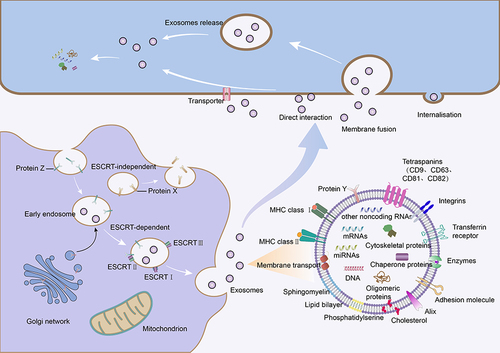Figures & data
Figure 1 Parental cells (left) release exosomes, which carry bioactive molecules to the surrounding environment. Exosomes, characterized as small vesicles adorned with molecular markers, mediate the transfer of molecules such as miRNA and proteins to target cells. This interaction occurs through binding to surface receptors on the target cells or by means of endocytosis, subsequently initiating a cascade of signal transduction pathways that modulate the functions of the target cells. This process leads to immune regulation, inflammation suppression, and other biological responses.

Table 1 The Application of Engineered Exosomes in Immunotherapy
Figure 2 Purified exosomes extracted from parent cells are subjected to genetic engineering and other modification methods to obtain engineered exosomes, which are then targetedly delivered to the site of action.

